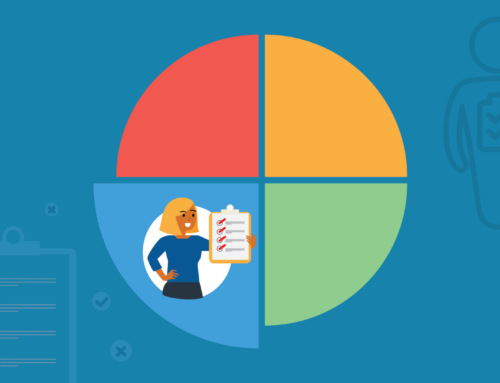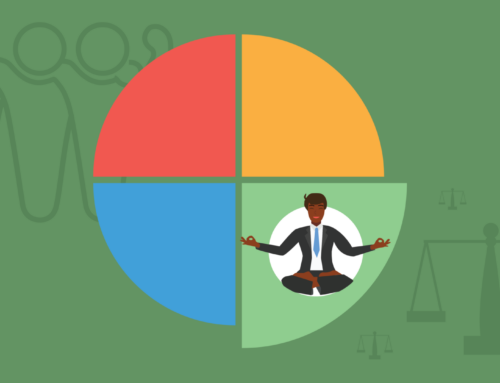As two of the most popular psychometric tests in the world, it’s likely that many people will undergo a Myers-Briggs or DISC assessment at some point in their careers.
But what are the differences between these two personality assessments, and which is better for use in the workplace?
In this article, we’ll look closely at the key features of both assessments to identify the differences between the two and how they should be used.
What is a psychometric test?
Psychometric tests, also called psychometric assessments, are a way of assessing an individual’s personality, behavioural style, mental capabilities, and thought processes. They are often used as part of a recruitment process to assess the suitability of a candidate for a role.
Within psychometric testing, there are two main types of assessment: aptitude tests and personality tests. Aptitude assessments are ability tests in which an individual will need to achieve a certain score to pass the test. Some common aptitude tests include numerical, spatial, or verbal reasoning, or situational judgement tests. Test takers may complete practice tests to prepare for these ability tests. Often, these are used as a pre-employment screening tool to indicate a candidate’s potential job performance.
On the other hand, personality tests, as the name suggests, analyse an individual’s personality and behaviours. Although they are commonly referred to as personality tests, we prefer to think of them as personality assessments. After all, there’s no way to pass or fail these tests; there are no results better or worse than the others, and they do not indicate aptitude at any skill. There’s no need to do practice tests because there is no ideal result or score to surpass.
Let’s compare two of the most common psychometric tests used to assess personality: Myers-Briggs and DISC.
What is the Myers-Briggs assessment?
The MBTI: A summary
The MBTI or Myers-Briggs Type Indicator is a questionnaire that assesses a participant’s personality type, preferences, and strengths. The MBTI assigns them a four letter result, such as ‘INFP’ or ‘ESFJ’. The letters correspond to four categories in which there are two options:
- Introversion (I) or extraversion (E)
- Sensing (S) or intuition (N)
- Thinking (T) or feeling (F)
- Judging (J) or perceiving (P)
A person who receives an INFP result from the MBTI questionnaire therefore has the dominant characteristics of introversion, intuition, feeling, and perceiving. There are 16 unique types possible.
Who created the MBTI assessment?
The original MBTI was created by Katharine Cook Briggs and her daughter Isabel Briggs Myers. The American duo began their work in the early 20th century. Neither had a formal education in psychology, they instead taught themselves about psychometric testing. Isabel Briggs Myers also worked as an apprentice to the personnel manager of a major Philadelphia bank to learn statistical methods, among other things.
Katharine Cook Briggs and Isabel Briggs Myers started working on the MBTI during the Second World War, hoping that it could be of help to women entering the workforce, allowing women to find the best wartime jobs for their personalities. The MBTI was based on Carl Jung’s theory of psychological types, which posited that people’s personalities are divided in four categories: introversion vs extraversion, sensing vs intuition, thinking vs feeling, and judging vs perceiving.
The first handbook for the MBTI was published in 1944 and further MBTI manuals have been published since.
How does an MBTI work?
Today, an MBTI self-assessment can be undertaken online or completed manually using a pencil and workbook. The individual must complete 88 questions (or more in the North American edition of the questionnaire). The questions are pairs of short statements which require the individual to choose the one they feel most true to them. The results of these choices provide individuals with their four letter personality type.
What is the DISC assessment?
The DISC assessment: A summary
The DISC model is a personality assessment that categorises people’s behaviours and personality styles into four distinct types:
- Dominance
- Influence
- Steadiness
- Compliance
Often used in a workplace setting, the results of a DISC personality assessment help individuals better identify their behaviours, strengths, and limitations. Understanding the ways that these personality types impact communication, leadership, and teamwork styles allows teams to work together more effectively.
Who created the DISC assessment?
Also created in the early 20th century, the modern DISC assessment is based on the work of psychologist William Moulton Marston. Marston believed that an individual’s behaviour could be understood on a quadrant with two axes: passivity to activity, and the individual’s perception of their environment being from antagonistic to favourable.
Marston’s ideas were developed into the first DISC self-assessment by industrial psychologist Walter Clarke in 1956. Since then, it has been developed into the modern assessment we use today.
How does a DISC assessment work?
A person’s DISC profile is determined using a questionnaire which typically features 24 questions. In each question, the individual is presented with four options, from which they must choose the one that best describes themselves and the one that is least relevant to their behaviours.
The answers to these questions are used to provide the individual with their personality type: Dominance, Influence, Steadiness, or Compliance. Individuals may exhibit a mix of features from the multiple styles, but the assessment results will indicate their dominant personality type.
What are the similarities between Myers-Briggs and DISC?
Both popular around the world, there are some key similarities between the MBTI and DISC psychometric tests.
Firstly, there are some similarities between the categories they use. For example, the DISC Dominance type often corresponds to the Myers-Briggs types with E and J, while the DISC Compliance (also sometimes called Conscientiousness) types may relate to the Myers-Briggs I and T categories.
Secondly, the Myers-Briggs and DISC psychometric testing techniques are both used in a workplace setting, including in the recruitment process or with current employees.
Furthermore, unlike aptitude tests such as numerical reasoning or verbal reasoning, DISC and MBTI questionnaires are not completed under time pressure. This gives individuals a chance to think carefully about their answers to be as accurate as possible.
What are the differences between these two assessments?
Complexity
While DISC indicates four main personality profiles, the MBTI categorises people in 16 distinct types. This means that the Myers-Briggs type indicator can provide more detail in its results.
However, it’s important to consider that the broad but equally descriptive categories used in the DISC personality assessment can be more memorable and easier to understand than the MBTI types. For example, individuals may find it easier to remember that they have the Steadiness type while their manager is a Dominance type, which means that they need to communicate in a particular way for the best results. On the other hand, an ENFP employee working with an ISTJ coworker might struggle to remember what each of the letters stands for and how that may impact their interactions.
Anyone weighing the benefits of these two psychometric tests will need to weigh the pros and cons of a more detailed MBTI result against the applicability of the workplace-oriented DISC personality model.
Assessment process
While both tests use a questionnaire, the question format is somewhat different. The DISC questionnaire has fewer questions, but each question must be answered by picking the option that is most relevant to the individual AND the option that is most unlike them. Meanwhile, the MBTI has more questions, but these are simple forced-choice questions where a person must pick one statement or the other.
Suitability for the workplace
In general, the MBTI is more introspective, looking at the inner workings of an individual’s mind. This can be great for personal growth and self-understanding. However, this is less suitable for a workplace setting. For analysing candidates in the recruitment process or when seeking to improve the communication within a team, the DISC assessment is a better choice as it is geared towards careers.
Moreover, the more personal nature of some of the MBTI’s questions may make individuals feel uncomfortable sharing their results with their coworkers or managers. On the other hand, the workplace focus of DISC styles may make individuals feel more comfortable discussing their results.
Which assessment is better for you: DISC vs MBTI?
This depends on your specific needs. Want to help your team better understand themselves as individuals? The Myers-Briggs type indicator might be beneficial. Want to use a personality test to improve teamwork, communication, and leadership in your organisation? A DISC profile is the obvious choice.
While both of these types of psychometric tests can be useful, DISC is the best option for promoting cohesion and communication in the workplace. By understanding where employees fall into the four DISC personality categories, it’s easy to create balanced teams and hire people who will perfectly complement the existing employees’ personality styles.
Ready to get started with DISC? Here at The DISC Group, we provide advanced personality assessments using our unique DISC Flow® model. This combines the powerful DISC assessment with the power of emotional intelligence.
Get in touch today to use DISC to enhance your workforce.





